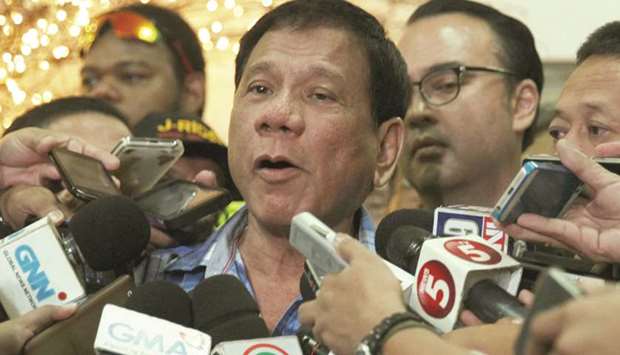President Rodrigo Duterte said there was a delay in the implementation of the “Build, Build, Build” programme because of shortage of qualified workers.
In a speech in San Jose del Monte, Bulacan, Duterte said qualified local workers opt to go out of the country to work, particularly in the Middle East, resulting in a shortage.
“Here in the Philippines, there are a lot of job opportunities. The same in Davao. The construction stops because there are no workers. Who are these workers? Master electrician, master carpenter, master plumber,” he said.
“Most of those who know these are not in the Philippines anymore; they are in Middle East.
Even (businessman Manuel V) Pangilinan, the PLDT Inc goes there, convincing the master planner, master electrician to go back to the Philippines and there will be higher wages,” he added.
“Which is why the Build, Build, Build programme is a bit delayed. There are no workers, even if there are a lot of Filipinos,” he said.
The president asked Filipinos to help each other address the issue. He also mulled letting rebel returnees to fill the holes, urging them to study at the Technical Education and Skills Development Authority (Tesda).
“There is the Tesda. You can stay there, study; I will pay for it until you graduate. You will have a house. All you have to do is to drop the weapon, and I will not ask any longer who you killed,” Duterte said.
In a press briefing, Palace spokesman Salvador Panelo said Duterte ordered Tesda chief Isidro Lapena to do something about it, so that the country would have a “deep bench” of workers.
“We were lacking in experts in carpentry, welding and technical (workers) — it is lacking.
We have a lot of people who are not employed in government or companies because they are not qualified, especially in vocational and construction,” Panelo said. According to the Build, Build, Build website, the reforms that would drive the programme were “the acceleration of infrastructure and the development of industries that will yield robust growth across the archipelago, create jobs and uplift the lives of Filipinos.”
Duterte poured a bulk of the government’s money for the massive infrastructure programme, which is comprised of 75 flagship projects: six airports, nine railways, three bus rapid transits, 32 roads and bridges, four seaports, four energy facilities, 10 water resource projects, five flood control facilities and three redevelopment programmes.
The public spending on infrastructure projects is targeted to reach P8 to 9tn from 2017 until the end of Duterte’s term.
Despite the nearing election period spending ban, Duterte issued Memorandum Circular 57 last week through Executive Secretary Salvador Medialdea, which called on government agencies to ensure the timely completion of government
infrastructure projects.

Duterte: concern over worker shortage
